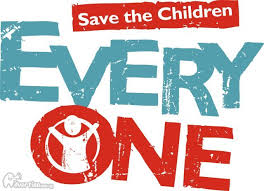Responsive Teaching Saves Children
I used to rack my brain for how I could reach my students better. There were times that I felt no matter what I did I wasn’t effective, or at least I thought. What I learned through much trial and error was that it had less to do with what I was doing and more to do with the time of day I was doing it. Boom. Life-changing truth.
Prior to figuring this out, I always started my day with a class meeting with announcements and shout outs. I then dove in to whatever subject lesson I was dictated to teach at what specific time (elementary school generally gives you a schedule to follow instead of you making up your own flow on your own to ensure the appropriate amount is allocated for specific subjects and that support can be provided to teach these subjects at the time planned, etc).
My students were quiet in the morning and completed their assignments without much convincing on my part. But, by the afternoon they turned into different people- wild, full of personality people. I enjoyed this second version of my class, but with its perks also came struggles.
I realized my students were the most astute in the morning. As a third grade teacher, testing in Math and Literacy is a HUGE event that occurs at the end of the year. Since these subjects are higher priority, I need to teach them when student’s minds are ready to be a sponge (first thing in the morning). However, I had to be smart with which subject I taught first because students, although astute, were a bit sleepy and reading a book during literacy block might not be as productive as I would hope. So to maximize my time, having interactive math lessons start the day woke my students up and allowed them an opportunity to grasp new material while their brains were ready and open. I followed this up with a 2 hour literacy block that was broken up with read aloud, word work, guided reading and independent reading. This flow ensured my kids had the opportunity to excel at a time that their brain was ready to take the information, process it, and create strong outputs.
My student’s learning increased just from rearranging my schedule and placing prioritized subjects at the start of the day when their brains were ready. That is responsive teaching.
Luckily, my administration had noticed this benefit as a whole and reworked schedules so that this was possible for all students and teachers.
The rest of my day was spent with Social Studies and Science; both important subjects, but not weighed as heavily on testing. Students were able to have recess and lunch as well as specials (art, music, media, PE, computers) to break up the rest of the day. They knew if they could have a rock star morning, the rest of the day was a piece of cake. This was motivating for students. It was helpful for parents too because they were able to schedule all dental and doctor appointments for the afternoon to avoid pulling their child out during the instruction times of these important subjects.
Parent and administrative support ensured students received the best instruction possible at the time that was most beneficial to them and the way their brain learned. What a win-win for us all!
One quick caveat before I close out… music was a big part of my classroom. I played music during work time to set the tone for the noise level as well as control the activity and energy level of my students. If I wanted intense focus, I played classical or blues. If I wanted engagement and collaboration, I played KidzBop. My student’s behavior responded naturally to the tempo of the music. I was fascinated by this- I could control my Ss response on some level by the choice of music I played- Boom. Life-changing truth.
It’s important to mention that quiet music being played during morning hours can put a quiet, compliant kid to sleep. So avoid something very quiet and slow when your student’s natural energy level is low. The same is true in the afternoon. When kid’s have their energy boost, playing fast paced music can quickly turn a energized group into a wild and crazy bunch. So be cautious in what you choose. There are uptempo classical tunes that increase student’s output without having that energetic empowerment proposition.
So I leave you with this… responsive teaching means responding to students in the moment. Just because you have a plan, it doesn’t mean students will be receptive to it. Watch for clues that things are going well or they aren’t and adjust in the moment if you can. Your job is to help students learn and if something like the schedule is getting in the way, do something about it.
Best of luck on your journey to help students become their best. I love the job of an educator! 🙂
How have you been a responsive teacher in your classroom?


